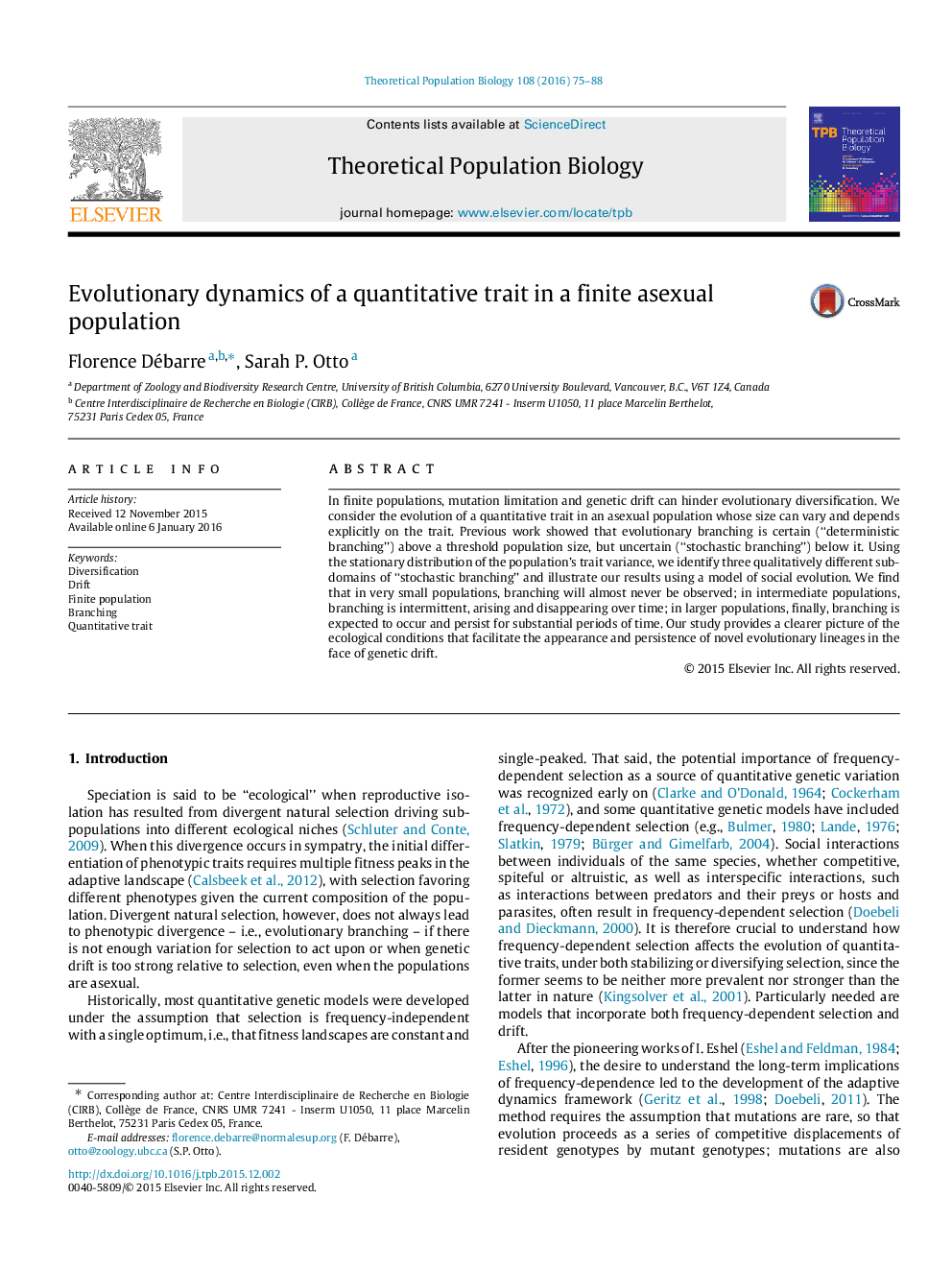| Article ID | Journal | Published Year | Pages | File Type |
|---|---|---|---|---|
| 6372308 | Theoretical Population Biology | 2016 | 14 Pages |
Abstract
In finite populations, mutation limitation and genetic drift can hinder evolutionary diversification. We consider the evolution of a quantitative trait in an asexual population whose size can vary and depends explicitly on the trait. Previous work showed that evolutionary branching is certain (“deterministic branching”) above a threshold population size, but uncertain (“stochastic branching”) below it. Using the stationary distribution of the population's trait variance, we identify three qualitatively different sub-domains of “stochastic branching” and illustrate our results using a model of social evolution. We find that in very small populations, branching will almost never be observed; in intermediate populations, branching is intermittent, arising and disappearing over time; in larger populations, finally, branching is expected to occur and persist for substantial periods of time. Our study provides a clearer picture of the ecological conditions that facilitate the appearance and persistence of novel evolutionary lineages in the face of genetic drift.
Related Topics
Life Sciences
Agricultural and Biological Sciences
Agricultural and Biological Sciences (General)
Authors
Florence Débarre, Sarah P. Otto,
